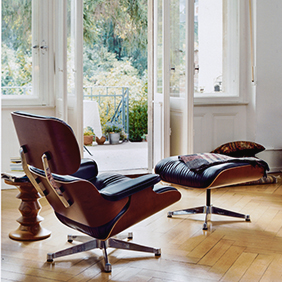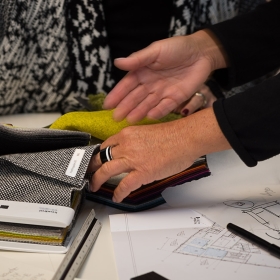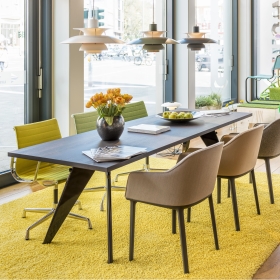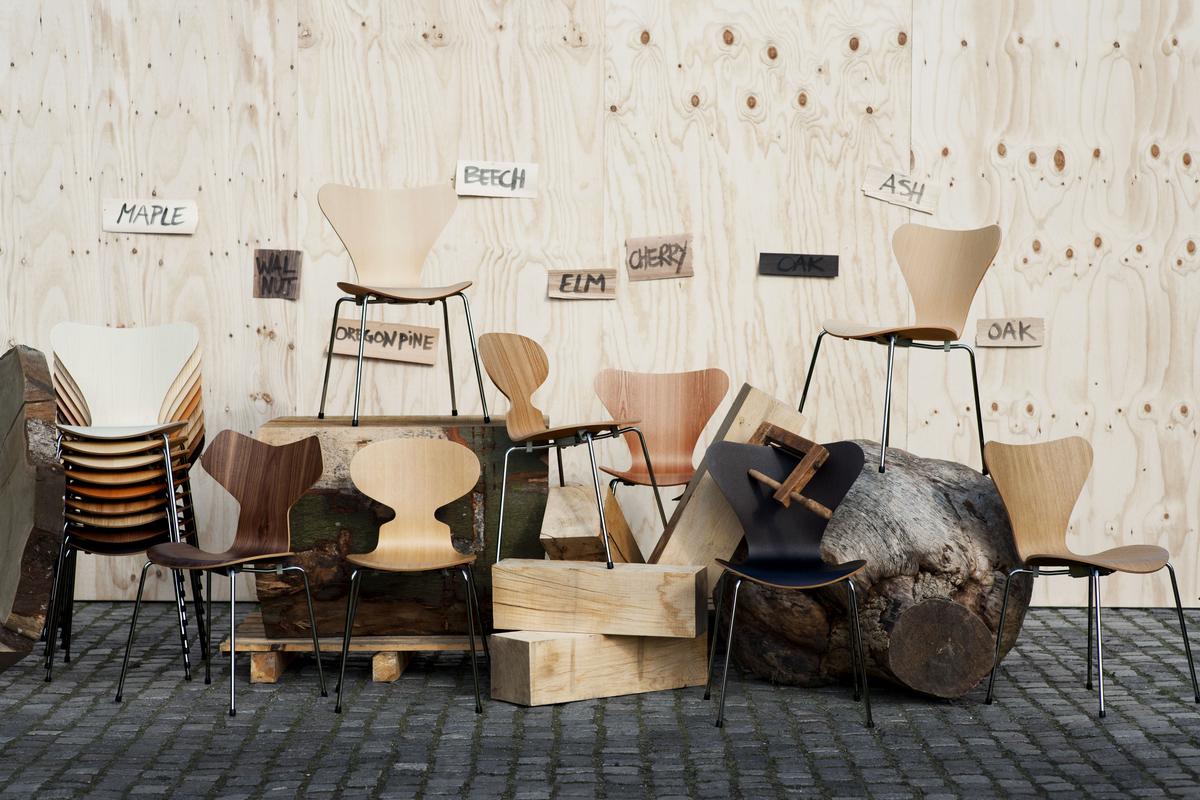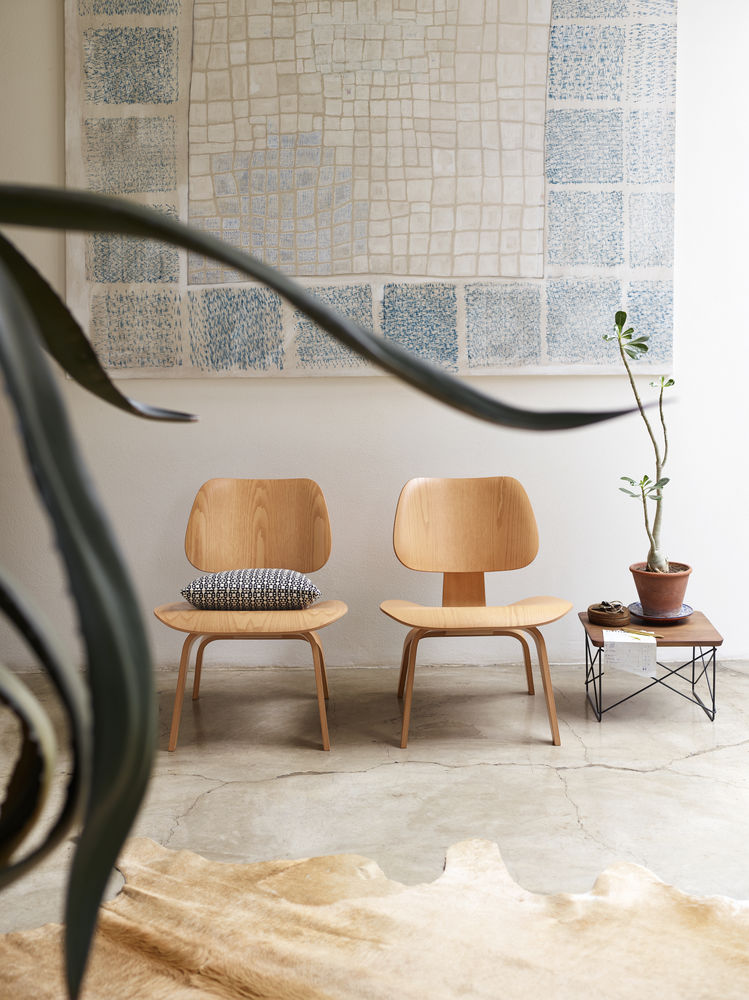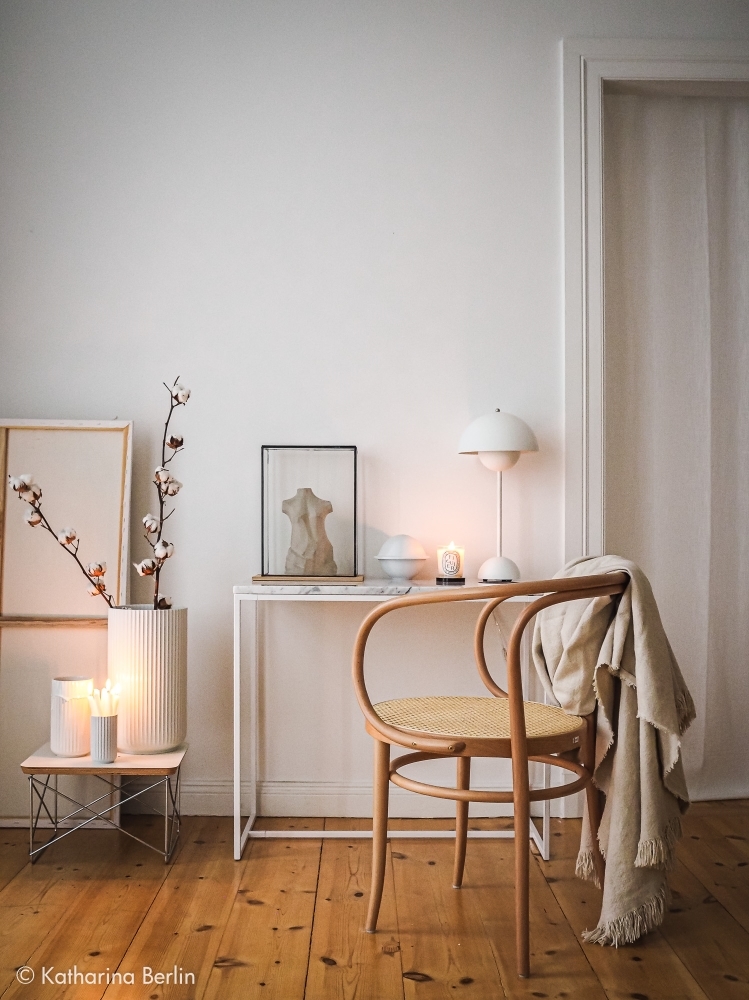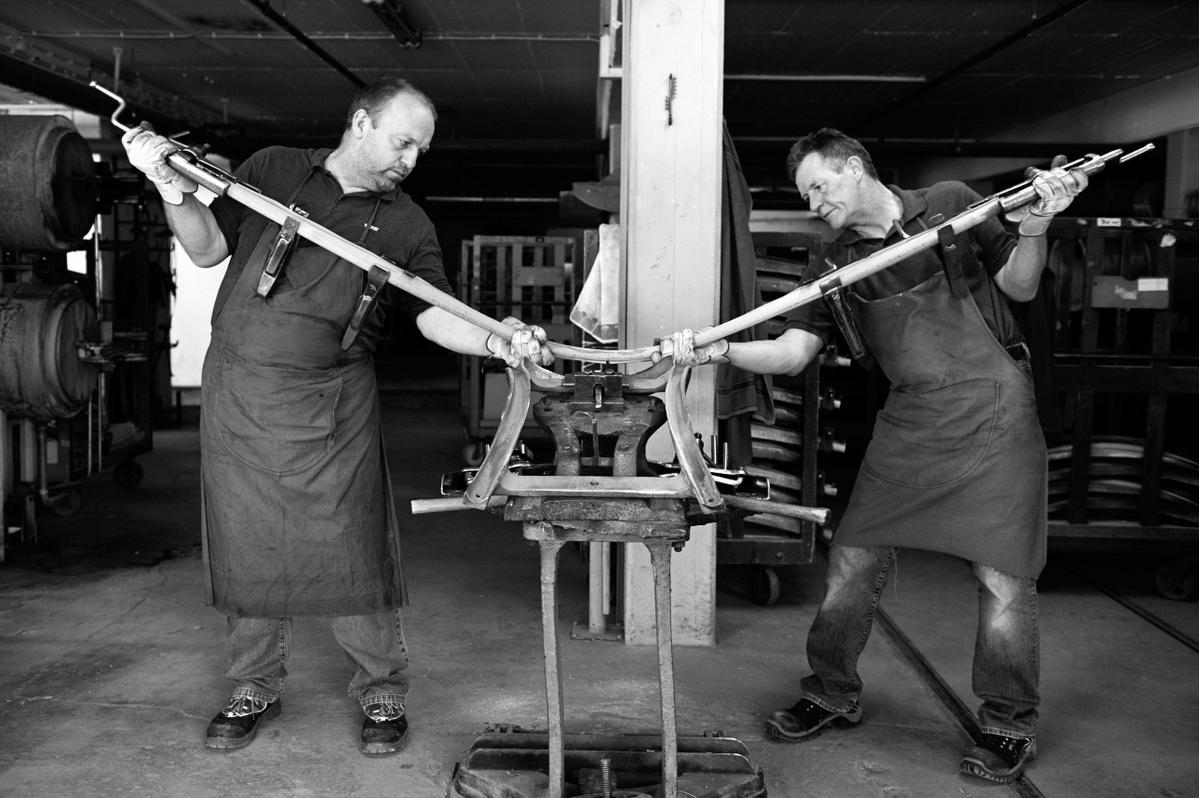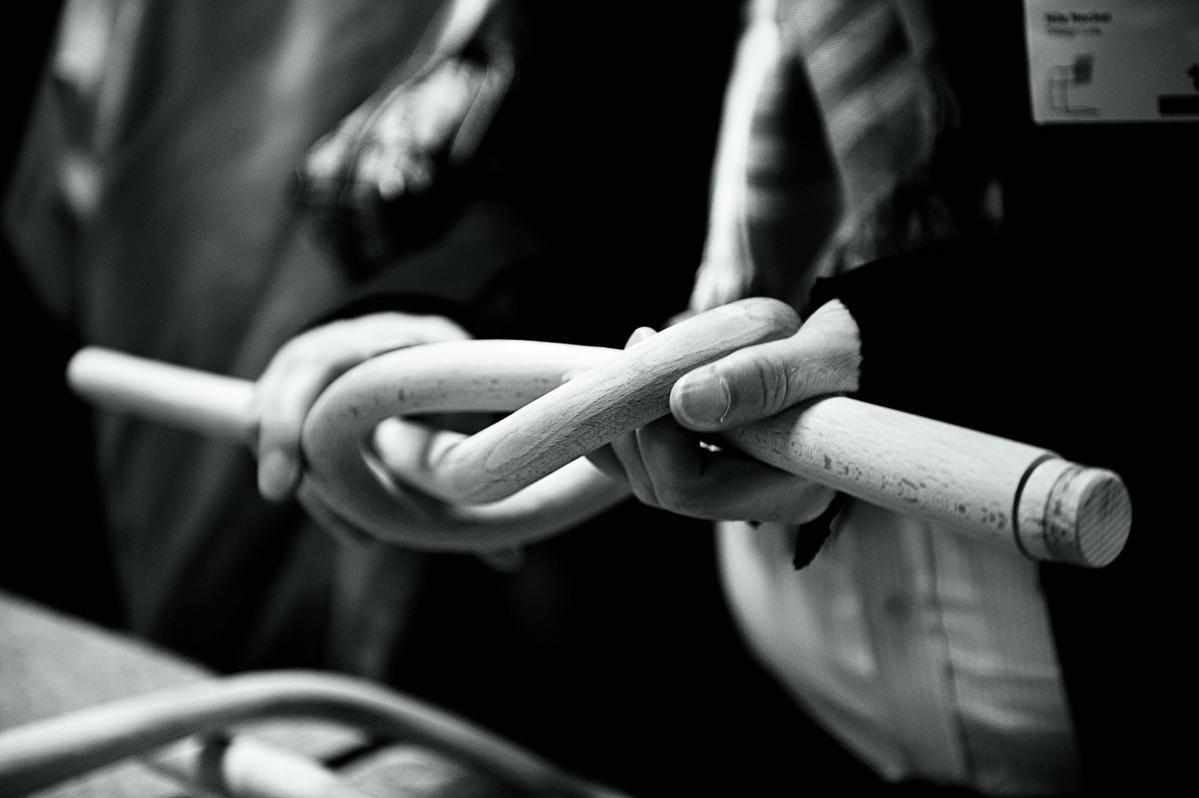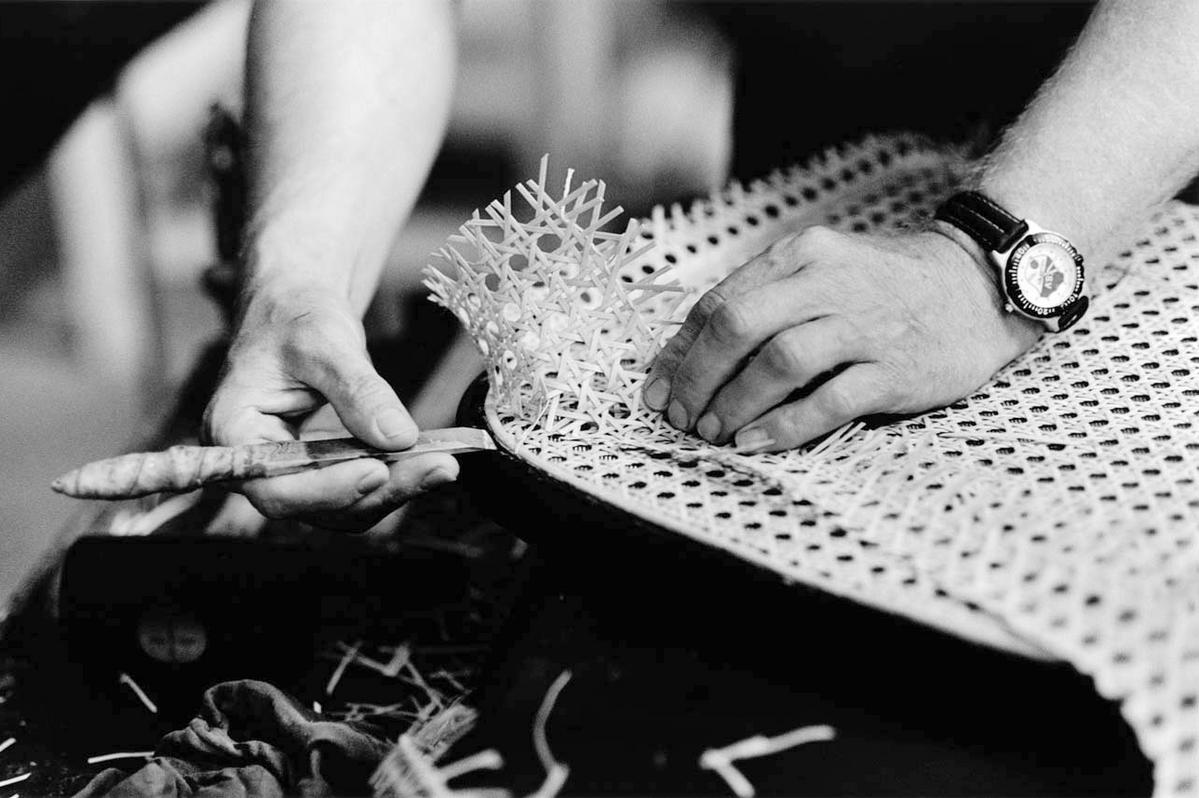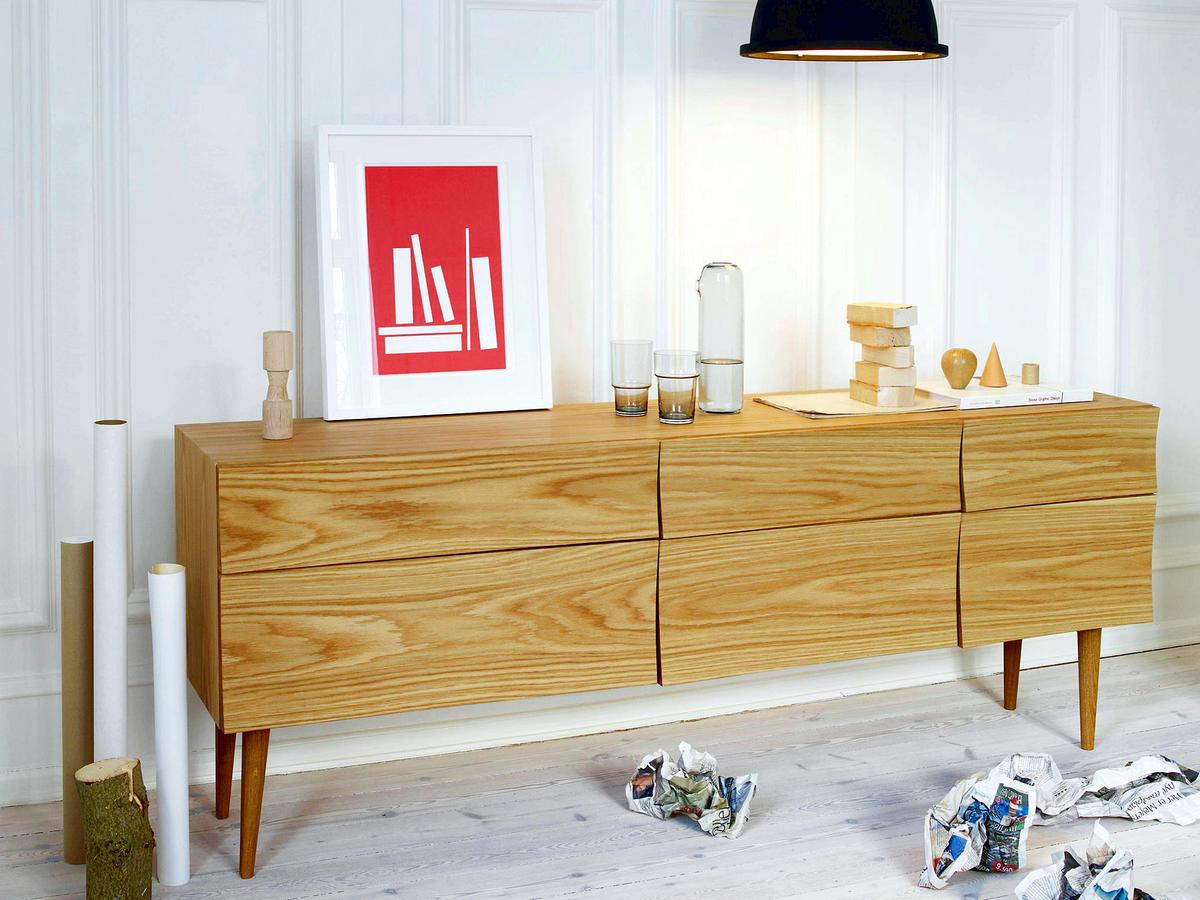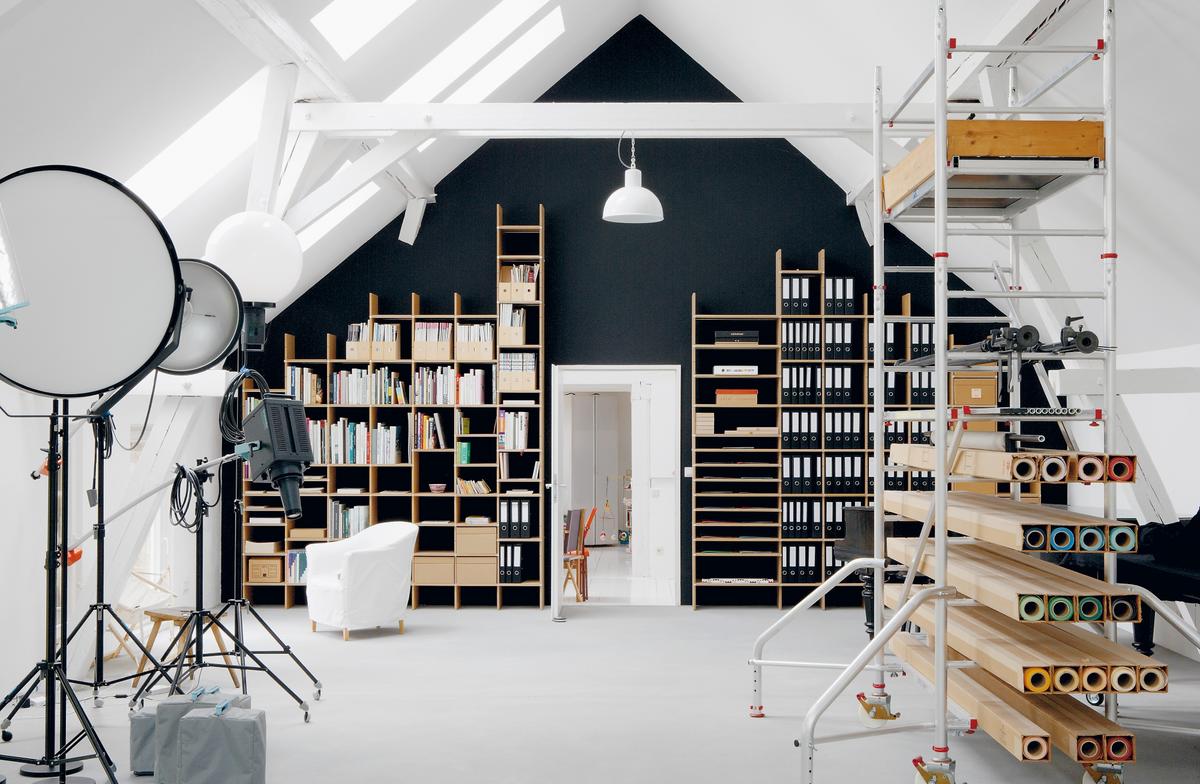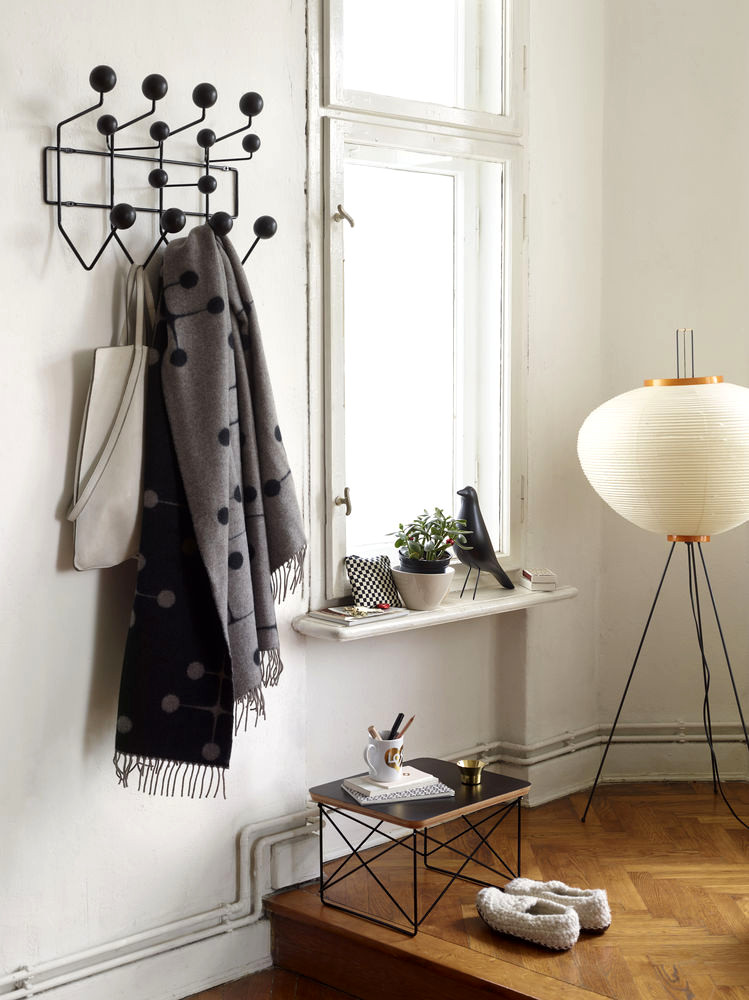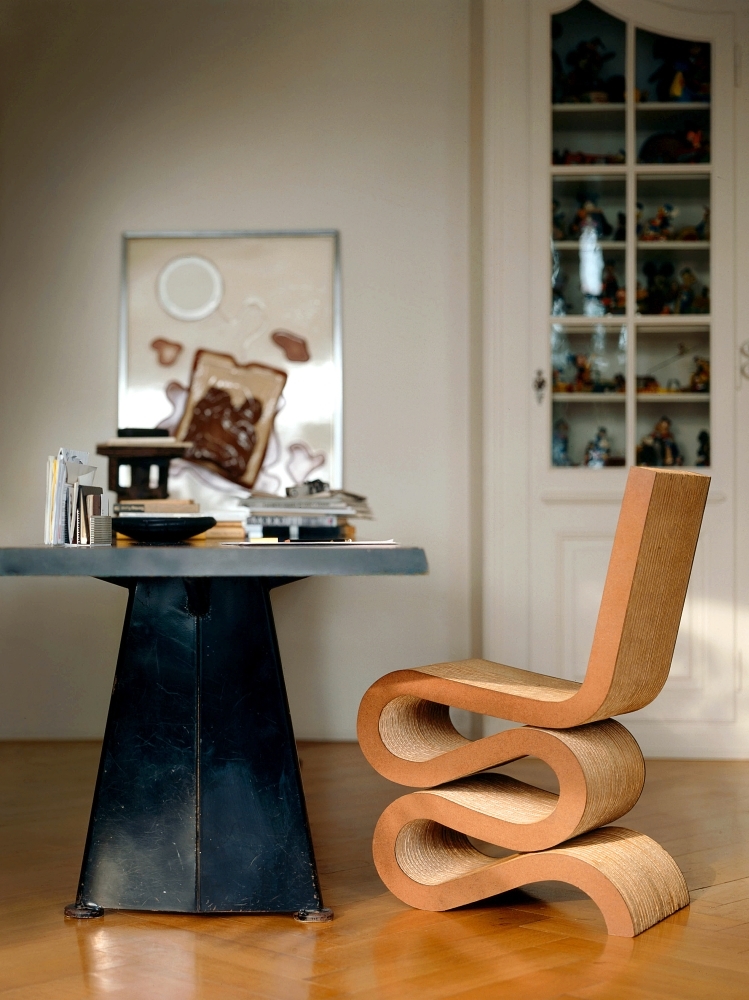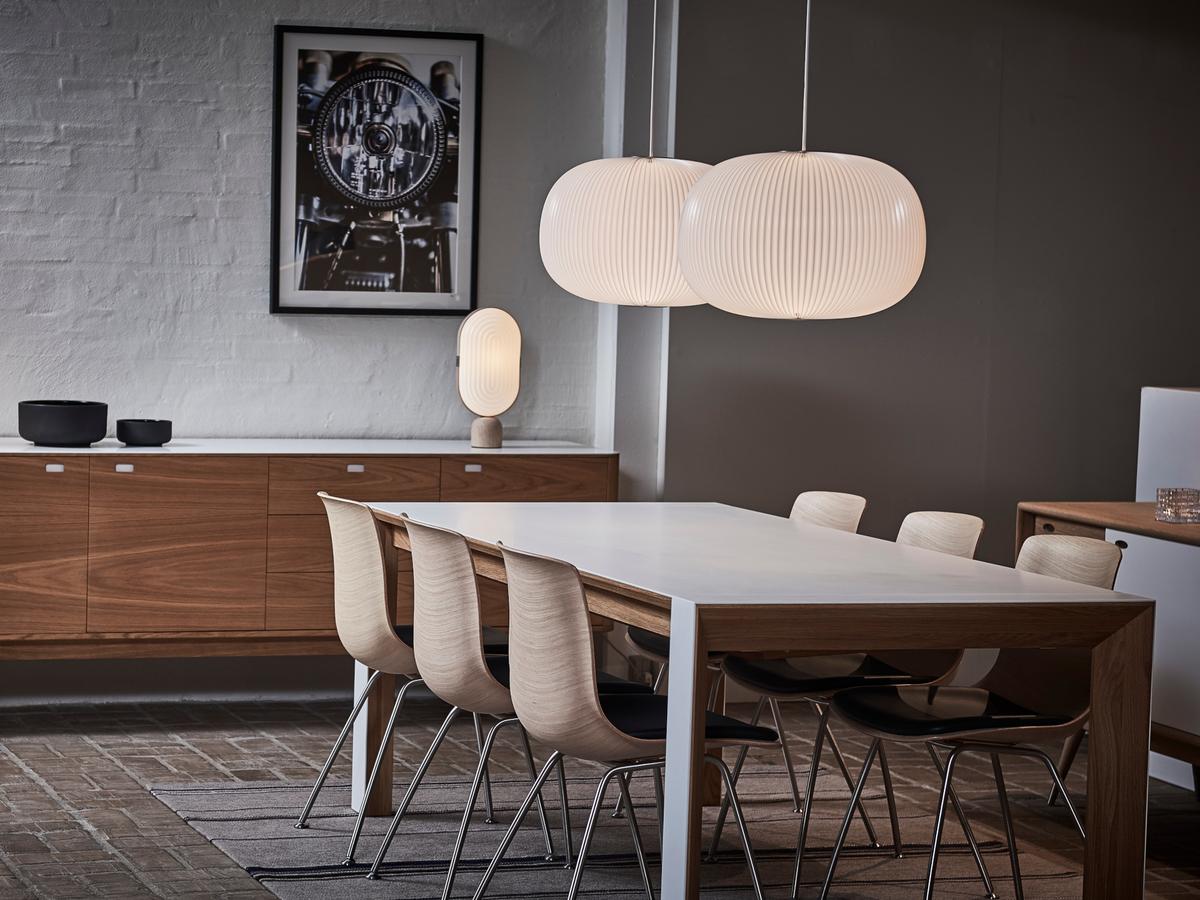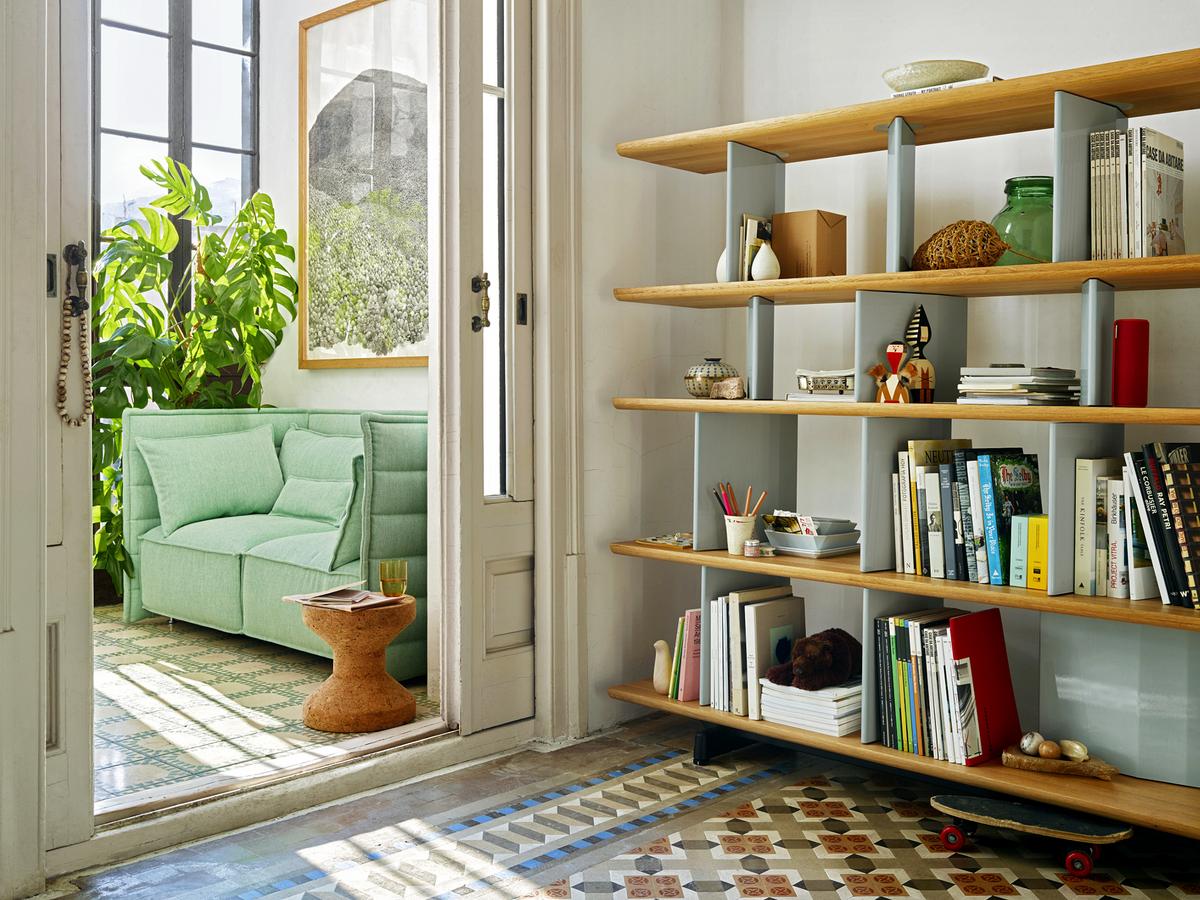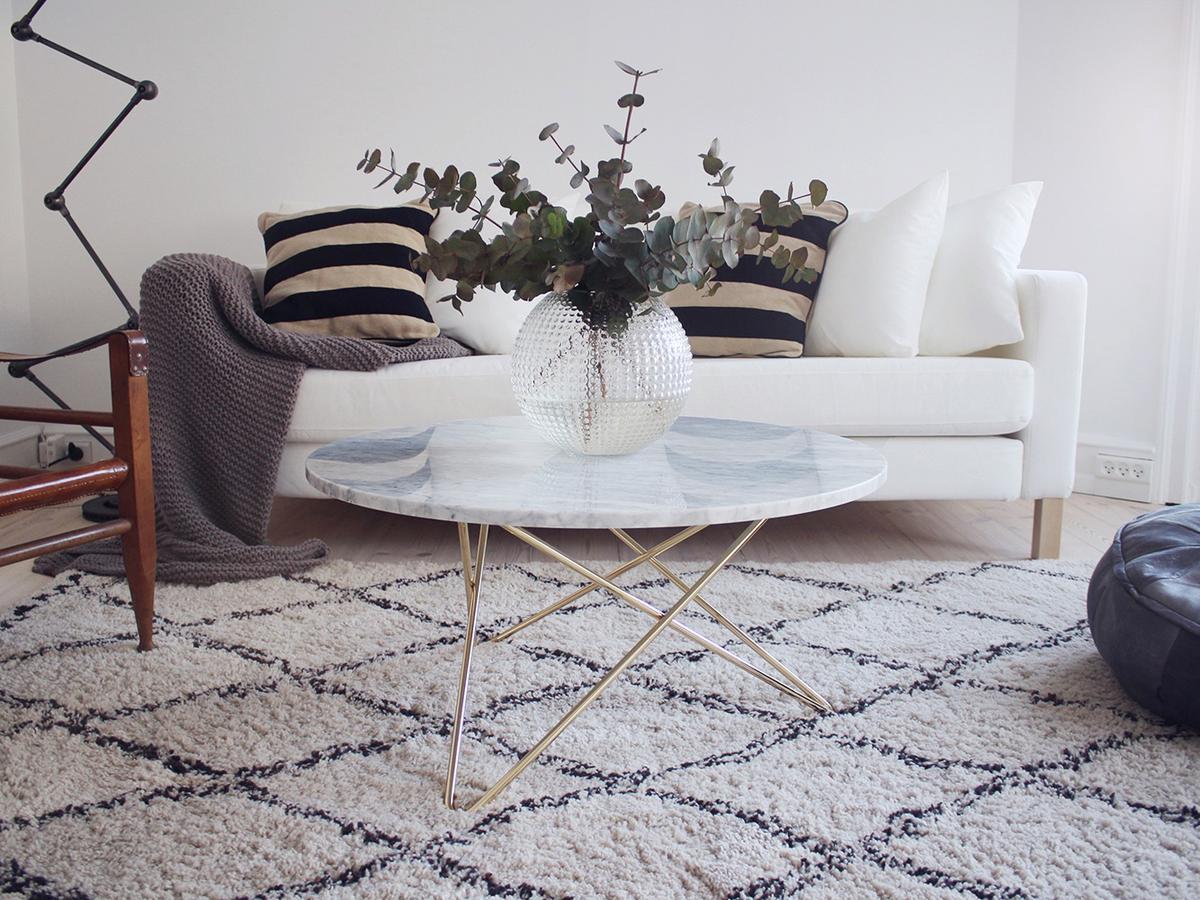Natural Materials
Natural beauty through natural materials
Wood is one of the most important raw materials that nature has to offer and its processing possibilities are as diverse as its types. And thanks to this variety wood can offer furniture to suit manifold tastes. Whether oiled, varnished, stained, soaped, limed or natural, the organic material always has its own individuality and character. And an individuality and character which matures with the furniture, the patina that naturally develops over the years recording the experiences of the object. In design, several revolutions have been driven by wood: think of the Thonet bentwood furniture or the Plywood Group from Charles & Ray Eames. Seemingly timeless in its popularity, wood furniture is still the zenith when it comes to high-quality in terms of aesthetics, durability and environmental responsibility. While nothing bequeaths a room such a unique warmth.
Fritz Hansen
Founded in 1885, the Danish company Fritz Hansen has become one of the world's most reputable manufacturers of high-quality designer furniture: something particularly noticeable in their many successful cooperations with Arne Jacobsen, cooperations which reached a zenith with the moulded plywood Series 7 chairs from the early 1950s.
Carl Hansen & Søn
Founded in 1908 in Denmark, Carl Hansen & Søn endeavour to combine traditional craftsmanship with the methods of mass production. To this end Carl Hansen & Søn focuses on wood as a material, a material with which they have helped construct the path to contemporary furniture design.
Thonet
Thonet can trace its history back to 1819 when company founder Michael Thonet began his exploration of the development of wood bending, an exploration which led him to create furniture from solid wood which is bent under water vapour. And a process still used today. With the introduction of chair No. 14, Thonet developed into a renowned company whose designer chairs and designer tables are manufactured with a mix of tradition and contemporary technology.
How bentwood revolutionised furniture history
Who could have foreseen that veneer strips boiled in glue one day revolutionise furniture production? Apart from Michael Thonet probably no-one, but from just this experiment Thonet developed in the mid 19th century one of the most innovative processes for the production of furniture: the bentwood process. The solid bentwood Thonet chair No. 14 was in addition one of the biggest selling and most universal popular chairs of the late 19th and early 20th century. And since its development designers have continually returned to the bending of wood in their experimentation and research: perhaps most famously, if not exclusively, Charles & Ray Eames with their Plywood Group crafted from moulded plywood.
1859: Thonet
The bentwood 214/214 M from German manufacturer Thonet, also known simply as the "coffee-house chair", is considered a pioneer piece of industrial furniture design.
1942: Egon Eiermann
The multi-bonded beech veneer seat of the SE 42 from Wilde + Spieth is three-dimensionally moulded and thus meets the ergonomic requirements of the sitter.
1952: Fritz Hansen/Arne Jacobsen
The Ant by Arne Jacobsen is produced by a glued plywood process and is the direct, three-legged, predecessor of the four-legged Series 7.
1945: Charles & Ray Eames
Charles and Ray Eames set a milestone in the history of furniture with the development of their Plywood Chairs from three-dimensionally shaped plywood. The Vitra LCW, for example, with its four curved legs is perfect for relaxing in - whether with or without high-quality leather upholstery.
The material from which modern trends are carved
Scandinavian furniture manufacturers as Muuto or Hay enjoy, despite their newcomer status, strong reputations and bring with their charming wooden designs a breath of fresh air to the living rooms of design enthusiasts. Generally working in cooperation with young designers the new generation of Scandinavians demonstrates a keen sense for both current Nordic-inspired home trends and for timelessly beautiful design: inspired by furniture from the mid 20th century with its organic shapes and tapered legs they create modern classics.
Made in Aschau - Sustainable wood furniture from Nils Holger Moormann
A man who, thanks to his own interpretation of wooden furniture and the common understood rules of furniture design, has revitalised the genre is Nils Holger Moormann. His eponymous company has been based since its inception in 1982 in the Bavarian village of Aschau, and Nils Holger Moormann himself has advanced to become one of the most critical thinkers among contemporary furniture manufacturers. A central component of the Moormann philosophy is the cooperation with suppliers from the region in order to both reduce the environmental impact and also strengthen the area economically. Much of the furniture produced by Nils Holger Moormann can also be found in the company's guest house "berge" - a hotel tip for all lovers of wood, unspoiled nature and unashamed individuality.
Fascinating variety of natural materials
Those who demand naturalness in their furniture need no longer make do with regular repetitions of oak, beech, et al. Modern Design provides innovative solutions from a wide range of natural materials, which differentiate themselves in terms of their material properties and which bring their own individual character into any given space.
Paper and rattan for lovers of detail
Through dewatering selected plant fibres, one can realise natural materials which allow for the creation of feather-light designs such as the Akari light sculptures by Isamu Noguchi, and distributed by Vitra. The filigree tubes of rattan palms have long been popular in context of furniture design, be that in the form of seats or entire wicker furniture, such as the Eiermann E 10 Rattan armchair. The E 10 obtains the necessary stability from the braided structure alone, which exists as an easy organic shape in which one can comfortably sit and relax. The wicker Thonet S 533 cantilever chair was designed by Ludwig Mies van der Rohe in the 1920s and is one of the absolute classics of furniture design. The Bauhaus chair was first presented in the Weissenhof estate in Stuttgart in 1927.
When it comes to the finest, handmade, paper as a material, Le Klint, one of the most important design manufactories in Denmark, cannot be ignored. Le Klint work exclusively with high-quality paper and a specially manufactured plastic film with durable properties, and from which great things are created entirely without the intervention of large machinery, but in precise manual work. The aim in every product is a Le Klint lamp that can pass on from generation to generation and thus preserve a beautiful piece of Danish design.
Cork - the all-rounder
From shoe soles to furniture design: cork is a genuine all-rounder! Cork is obtained from the bark of the cork oak, a tree which thrives in the western Mediterranean, can grow up to 12 meters high and that can live for 250 to 350 years. The bark can initially be harvested from the age of 25 to 40 years - afterwards the harvest takes place every nine to 12 years. During the harvest a maximum of one third of the cork bark is peeled by hand: special care being required as the cork-forming cambium layer of the trunk must not be damaged under any circumstances. Ideally, cork oaks can be harvested up to 16 times during their productive life. The bark possesses good processing properties, is sound-absorbing and fire-retardant, resistant to rotting and environmentally friendly. Cork is particularly popular in the living area, for example in the form of the Cork Family by Jasper Morrison: the Vitra stools are robust and light at the same time, have a pleasant feel and are an original alternative to the classic side table or stool.
- Renewable
As a renewable raw material, cork is particularly sustainable. - Durable
Cork belongs to the group of the most durable organic materials and retains its material properties over a long period of time. - Food safe
Cork is innately harmless and odorless. - Light
The air sealed in the cork microcells represents 90 % of its volume. Cork is five times lighter than water, so it is very light. - Flame retardant
Cork boards are often flame retardant due to their high thermal inertia. - Insulates heat and cold
Cork has a low thermal conductivity. - Sound insulating
Thanks to its specific structure, cork absorbs sound and vibration waves. Due to the air stored in the cork, cork insulation is not only heat- but also soundproof. - Waterproof
Cork is water-repellent and is therefore very suitable as a floor covering. - Pleasant haptics
Its velvety feel makes cork a particularly pleasant material. - Warm look
Cork creates a cosy atmosphere in the living area.
Marble - luxurious natural stone with a history
Whether kitchen planning, bathroom tiles or home accessories, marble is an absolute interior trend and is an integral part of many design concepts. The noble material is by no means new: in ancient times and in the Roman Empire, the natural stone was considered valuable; numerous famous works of fine art such as Michelangelo's Pietà in the Peterskirche in Rome, his statue David in Florence or prestigious buildings such as the Greek Acropolis or the Taj Mahal in India were made from the valuable rock. And the extraction of marble remains a complex and cost-intensive process, which explains the price for the rare material. In the 18th century explosives were used for the extraction, with the inevitable damage, subsequently wire ropes running on rolls were also used to mine marble, and today the blocks of stone are cut from the mountain with wire saws or cutters, a method in which special attention is paid to the natural cracks in the stone. Larger mining regions for marble are located in France, Greece, Italy, Portugal, Turkey, the United States and Canada. The Italian city of Carrara in particular became famous worldwide for its marble deposits, not least on account of the some 40 types of marble which are mined in the approximately 150 quarries in the area.
- Food safe
Marble does not affect the smell and taste of food and is harmless to health. - Unique
Marble is a natural material, so the pattern can vary: every marble object is unique. - Suitable for allergy sufferers
Marble has a closed surface, is easy to care for and therefore well suited for people with house dust allergy. - Durable
Marble is extremely hard and durable. - Polished
Marble can be polished up again and again and thus always looks like new regardless of age. - Heat-resistant
Marble proves to be extremely heat-resistant: the material can easily withstand temperatures of up to 600 °C.


